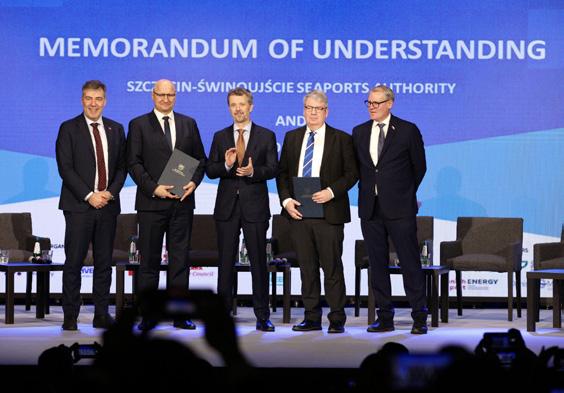
6 minute read
Esbjerg grows - in size, depth & through partnerships
by Fitzwilliam Scott
First, the Danish seaport saw the completion of the fifth phase of its expansion, with over four million cubic metres of sand & clay moved and repurposed to create 570 thousand square metres of new port areas. By the end of the year, this extra space will be ready for leasing, increasing the port’s total area by 10%. Second, Esbjerg completed (on time & under budget) the Connecting Europe Facility-supported (211 million Danish crowns) NORTHERNSEALYTS project that saw its fairway dredged from 9.3 to 12.8 metres. Third, Port Esbjerg has struck partnerships, including with the Norwegian WindPort and the German Brunsbüttel Ports.
The expansion investment was carried out to make room for handling more offshore wind energy projects and other oversized cargo, as well as to partake in setting up logistics infrastructure for carbon capture & storage (CCS). "Over the next five years alone, 13.5GW of offshore wind capacity is expected to be shipped from Port Esbjerg –underlining the port’s crucial role in delivering Europe's green ambitions. The new area will also support the establishment of Denmark's first CO2 terminal, which will be a key component of Europe's first full-scale CCS project. Additionally, the significant increase in area ensures that companies at the port have more room to operate while enabling Port Esbjerg to support strategic objectives within modular cargo," the Danish seaport highlights.
Potential - unlocked
Shortly afterwards, and after years of preparation and large-scale construction works, the 21.6-kilometre-long via Grådyb fairway to Port Esbjerg got fully deepened. The upgrade enables access for larger vessels, handling of more cargo, and paves way for new strategic opportunities in both the energy and defence sectors. "The deepening of the fairway marks a major milestone. It expands our overall capacity and unlocks new potential for the future," says Dennis Jul Pedersen, CEO of Port Esbjerg.
In total, 3.7 million cubic metres of seabed material were moved as part of the NORTHERNSEALYTS project (much of the dredged material was reused to expand the southern areas of the port). While 2.5 metres may not sound like much, the impact is transformative. "This is a milestone that strengthens our position as an international hub for logistics and energy," adds Dennis Jul Pedersen. His port lists three strategic advantages. First, more cargo, larger vessels: the increased depth allows Port Esbjerg to accommodate significantly bigger and heavier ships. As such, the port now expects to double its cargo volume over the next decade. Second, strengthening of offshore wind leadership: future offshore wind installation vessels and components are becoming larger and heavier. The new fairway ensures that Port Esbjerg can maintain - and grow - its position as Europe’s leading port for offshore wind shipments. Third, enhancing military readiness: the deeper fairway enables Port Esbjerg to receive larger ro-ro and military vessels. This significantly enhances the port's strategic importance to NATO and enables faster and more efficient response during periods of heightened readiness. With this upgrade, Port Esbjerg joins an exclusive group of European seaports capable of handling this class of ships and cargo.
The port is now well-positioned to play an active role in the global logistics shifts driven by geopolitical developments and changing global trade patterns. "We are already seeing that several partners and companies within the maritime sector are in need of ports that can accommodate significantly larger vessels. This is no longer something lying in the future - it is here and now. And now, Port Esbjerg is ready," Dennis Jul Pedersen sums up.
The fairway deepening is part of a broader infrastructure development plan - in and around Esbjerg. The rail connection to the port has recently been extended, and new reinforced areas have been established for heavy logistics - with a particular focus on offshore wind. "We have removed a key barrier. We are now even better positioned to serve as a centre for green energy and military logistics. The fairway is more than an engineering project - it is the foundation for our future," underlines Dennis Jul Pedersen.
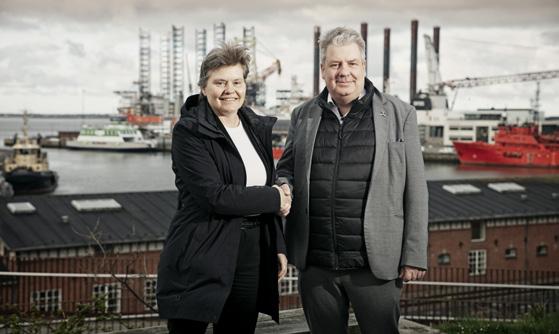
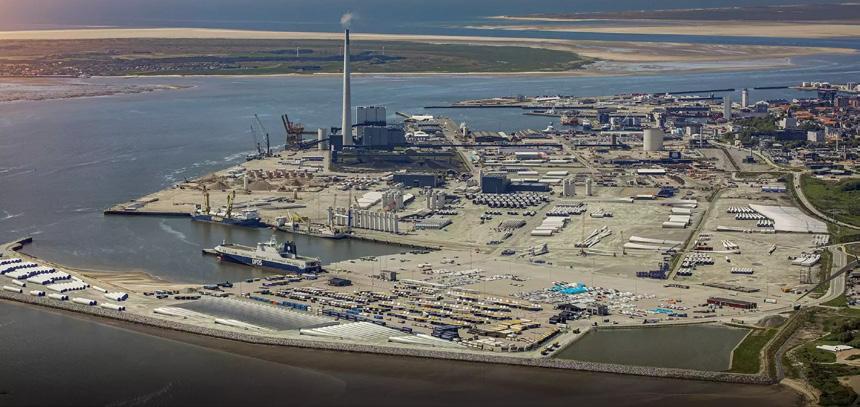
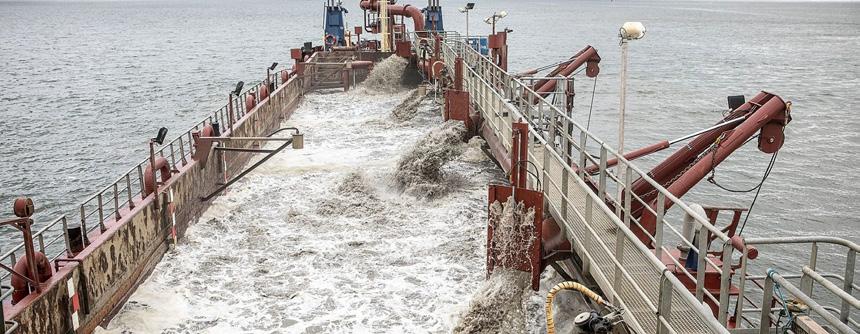
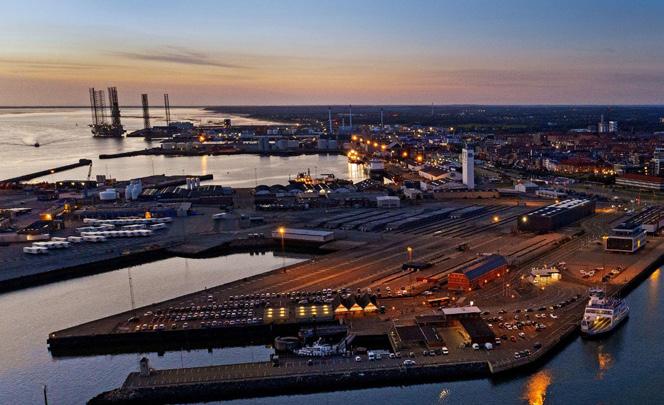
Søren Gade, Chairman of the Board of Port Esbjerg, also highlights the strategic significance, "We have reached a crucial milestone that opens the port to the vessels shaping the future of energy and security. This strengthens not only Port Esbjerg but also Denmark's role in the green transition and in international defence cooperation." Dennis Jul Pedersen concludes this thread by saying, "This project is complete - but development continues. We now have a port ready to meet the demands of the future, and we look forward to realising its full potential in close partnership with both the energy and defence sectors."
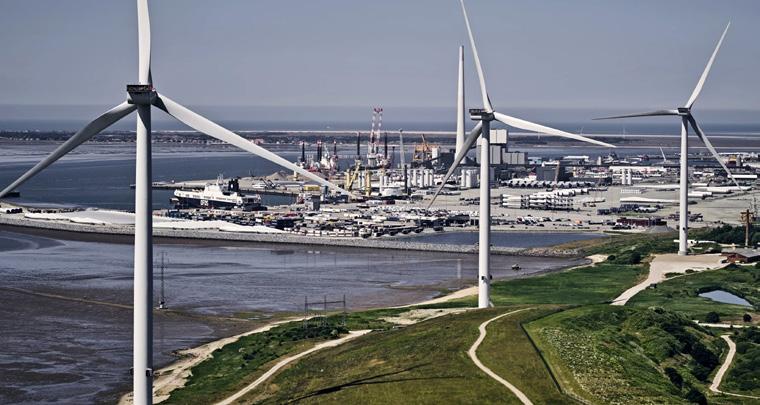
Widely regarded
Crucially important, Esbjerg also works with others to level up the entire port sector and industries relying on it.
As such, the Danes will share their operational know-how, engineering insight, and logistical practices in WindPort's efforts to become the marshalling hub for the Sørlige Nordsjø II offshore wind energy farm (1,400-1,500-megawatt-capacity).
"Port Esbjerg is widely regarded as one of the most experienced offshore wind ports globally. Learning from their experience enables us to build smarter from the start," shares Turid Storhaug, Managing Director at WindPort.
To strengthen international collaboration, Port Esbjerg also took the initiative to establish the Offshore Wind Port Alliance - a strategic partnership between leading
European ports aiming to accelerate offshore wind deployment. This Alliance facilitates the exchange of best practices and coordinated capacity planning, helping to ensure that port infrastructure across Europe keeps pace with the growing scale of offshore wind projects.
Port Esbjerg has also signed a memorandum of understanding with Brunsbüttel Ports that's aimed at developing efficient logistics, port terminal solutions, and the transport and storage of carbon dioxide.
"To decarbonise heavy industries, we need effective carbon capture and storage solutions - and that means moving CO2 from where it’s emitted to where it can be safely stored. Ports will be key hubs in this process. With this new collaboration, Brunsbüttel and Esbjerg are taking the lead in building the infrastructure that will support industrial clusters in Northern Germany and storage operations on the Danish Continental Shelf," comments Dennis Jul Pedersen.
